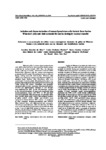Use este identificador para citar ou linkar para este item:
http://www.alice.cnptia.embrapa.br/alice/handle/doc/1051545Registro completo de metadados
| Campo DC | Valor | Idioma |
|---|---|---|
| dc.contributor.author | SILVA, C. G. da | pt_BR |
| dc.contributor.author | MARTINS, C. F. | pt_BR |
| dc.contributor.author | CARDOSO, T. C. | pt_BR |
| dc.contributor.author | CUNHA, E. R. da | pt_BR |
| dc.contributor.author | CUMPA, H. C. B. | pt_BR |
| dc.contributor.author | MCMANUS, C. M. | pt_BR |
| dc.contributor.author | PIVATO, I. | pt_BR |
| dc.contributor.author | BAO, S. N. | pt_BR |
| dc.date.accessioned | 2016-08-24T11:11:11Z | pt_BR |
| dc.date.available | 2016-08-24T11:11:11Z | pt_BR |
| dc.date.created | 2016-08-24 | pt_BR |
| dc.date.issued | 2016 | pt_BR |
| dc.identifier.citation | Ciência Rural, Santa Maria, v. 46, n. 10, p. 1830-1837, out. 2016. | pt_BR |
| dc.identifier.issn | ISSN 1678-4596 | pt_BR |
| dc.identifier.uri | http://www.alice.cnptia.embrapa.br/alice/handle/doc/1051545 | pt_BR |
| dc.description | RESUMO: A geleia de Wharton é uma fonte de células tronco mesenquimais (CTMs) que ainda não havia sido testada para a produção de embriões bovinos por transferência nuclear (TN). O objetivo deste estudo foi isolar, caracterizar e testar as CTMs derivadas da geleia de Wharton para produção de embriões e gestações por transferência nuclear em bovinos. O cordão umbilical foi coletado durante o nascimento e as células derivadas da geleia de Wharton (CGWs) foram isoladas por explante e cultivadas em Dulbecco?s Modified Eagle Medium. Fibroblastos (FB) da pele foram isolados após 6 meses de vida. As análises morfológicas foram realizadas pelas microscopias de campo claro e eletrônica de varredura durante o cultivo celular. Caracterização fenotípica e genotípica por citometria de fluxo, imunocitoquímica, RT-PCR e indução da diferenciação em linhagens celulares foi realizada com as CGWs. No procedimento de TN, ovócitos no estágio de metáfase II foram enucleados usando micromanipuladores, fusionados com CGWs ou FB e então ativados artificialmente. Micrografias de microscopia de varredura revelaram que CGWs tiveram forma variada sob cultivo. Os marcadores mesenquimais de CTMs (CD29+, CD73+, CD90+ and CD105+) foram expressos em cultura de CGWs bovina, como evidenciado por citometria de fluxo, imunocitoquímica e RT-PCR. Quando induzidas, estas células diferenciaram-se em osteócitos, condrócitos e adipócitos. Após classificação, as CGWs foram utilizadas na TN. A taxa de formação de blastocistos por TN com CGWs no sétimo dia de cultivo foi de 25,80±0,03%, similar a produção de blastócitos por TN com fibroblastos de pele (19,00±0,07). Gestações foram obtidas e mostraram que CGWs constituem um novo tipo celular para ser usado na clonagem animal. ABSTRACT: Wharton?s jelly is a source of mesenchymal stem cells (MSCs) that had not yet been tested for bovine embryo production by nuclear transfer (NT). Thus, the objective of this study was to isolate, characterize and test MSCs derived from Wharton?s jelly for embryo and pregnancy production by NT in cattle. The umbilical cord was collected during calving and cells derived from Wharton?s jelly (WJCs) were isolated by explant and cultured in Dulbecco?s Modified Eagle Medium. Skin Fibroblasts (FB) were isolated after 6 months of life. Morphological analysis was performed by bright field and scanning electron microscopy (SEM) during cell culture. Phenotypic and genotypic characterization by flow cytometry, immunocytochemistry, RT-PCR and differentiation induction in cell lineages were performed for WJC. In the NT procedure, oocytes at the arrested metaphase II stage were enucleated using micromanipulators, fused with WJCs or FB and later activated artificially. SEM micrographs revealed that WJCs have variable shape under culture. Mesenchymal markers of MSCs (CD29+, CD73+, CD90+ and CD105+) were expressed in bovine-derived WJC cultures, as evidenced by flow cytometry, immunocytochemistry and RT-PCR. When induced, these cells differentiated into osteocytes, chondrocytes and adipocytes. After classification, the WJCs were used in NT. Blastocyst formation rate by NT with WJCs at day 7 was 25.80±0.03%, similar to blatocyst rate with NT using skin fibroblasts (19.00±0.07%). Pregnancies were obtained and showed that WJCs constitute a new cell type for use in animal cloning. | pt_BR |
| dc.language.iso | eng | eng |
| dc.rights | openAccess | eng |
| dc.subject | Célula tronco mesenquimal | pt_BR |
| dc.subject | Cordão umbilical | pt_BR |
| dc.subject | Geleia de Wharton | pt_BR |
| dc.subject | Reprodução assistida | pt_BR |
| dc.title | Isolation and characterization of mesenchymal stem cells derived from bovine Wharton's jelly and their potential for use in cloning by nuclear transfer. | pt_BR |
| dc.type | Artigo de periódico | pt_BR |
| dc.date.updated | 2016-09-08T11:11:11Z | pt_BR |
| dc.subject.thesagro | Clonagem | pt_BR |
| dc.subject.thesagro | Reprodução Animal | pt_BR |
| riaa.ainfo.id | 1051545 | pt_BR |
| riaa.ainfo.lastupdate | 2016-09-08 | pt_BR |
| dc.identifier.doi | http://dx.doi.org/10.1590/0103-8478cr20151074 | pt_BR |
| dc.contributor.institution | CAROLINA GONZALES DA SILVA, UNB; CARLOS FREDERICO MARTINS, CPAC; TEREZA CRISTINA CARDOSO, UNESP; ELISA RIBEIRO DA CUNHA, UNB; HEIDI CHRISTINA BESSLER CUMPA, CPAC; CONCEPTA MARGARET MCMANUS, UNB; IVO PIVATO, UNB; SÔNIA NAIR BÁO, UNB. | pt_BR |
| Aparece nas coleções: | Artigo em periódico indexado (CPAC)  | |
Arquivos associados a este item:
| Arquivo | Descrição | Tamanho | Formato | |
|---|---|---|---|---|
| Isolationandcharacterizationofmesenchymal.pdf | 411.63 kB | Adobe PDF |  Visualizar/Abrir |









